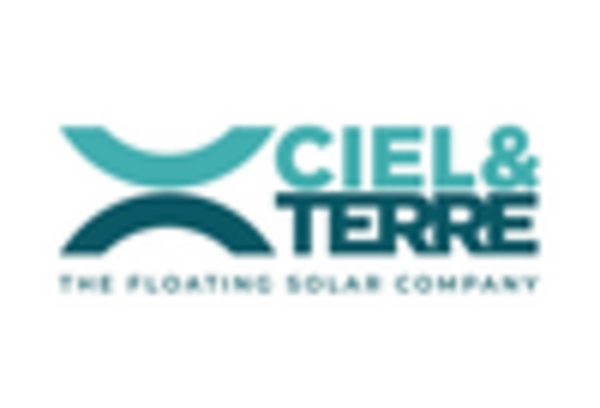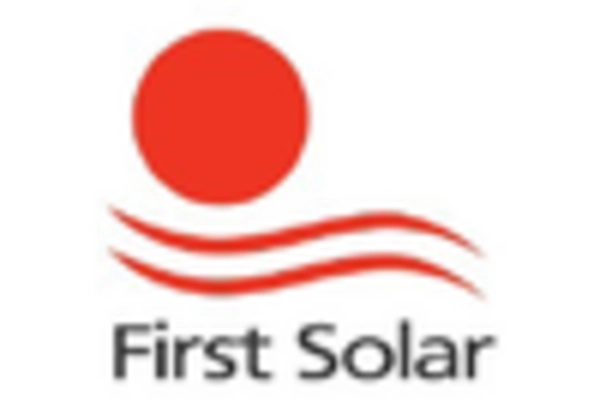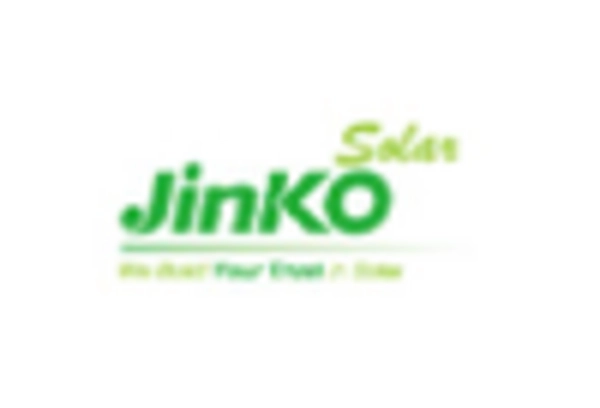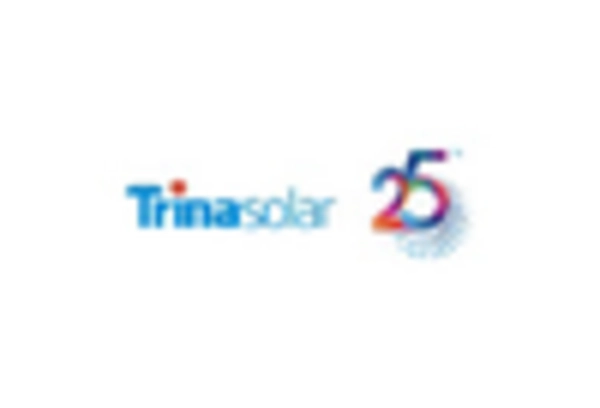Cost-Effectiveness
The Floating Photovoltaics Market is witnessing a trend towards cost-effectiveness, as advancements in technology and manufacturing processes reduce the overall costs associated with floating solar systems. The installation of floating solar panels can be less expensive than traditional ground-mounted systems, particularly in regions where land is scarce or expensive. Additionally, floating systems can benefit from reduced cooling costs, as water bodies help maintain optimal operating temperatures for solar panels. Recent analyses indicate that the levelized cost of electricity (LCOE) for floating solar installations has decreased significantly, making them a more attractive option for investors and developers. This cost advantage is likely to drive further adoption of floating photovoltaics, enhancing their role in the renewable energy landscape.
Rising Energy Demand
The Floating Photovoltaics Market is experiencing a surge in demand for renewable energy sources, driven by increasing global energy consumption. As populations grow and economies expand, the need for sustainable energy solutions becomes more pressing. Floating photovoltaics offer a unique advantage by utilizing water bodies, which are often underutilized, to generate electricity. This approach not only helps in meeting energy demands but also reduces land use conflicts associated with traditional solar installations. According to recent estimates, the energy demand is projected to rise by approximately 30% by 2040, further emphasizing the need for innovative solutions like floating photovoltaics. The Floating Photovoltaics Market is thus positioned to play a crucial role in addressing this escalating energy requirement.
Technological Innovations
The Floating Photovoltaics Market is at the forefront of technological innovations that enhance the efficiency and reliability of solar energy systems. Recent advancements in materials, design, and installation techniques have led to the development of more robust and efficient floating solar platforms. Innovations such as lightweight materials and improved anchoring systems are making it easier to deploy floating photovoltaics in diverse aquatic environments. Additionally, the integration of smart technologies, such as monitoring systems and predictive maintenance, is optimizing the performance of floating solar installations. These technological advancements not only improve energy output but also reduce operational costs, making the Floating Photovoltaics Market an attractive option for investors and developers seeking to leverage cutting-edge solutions in renewable energy.
Environmental Sustainability
The Floating Photovoltaics Market is increasingly recognized for its potential to contribute to environmental sustainability. By utilizing water surfaces for solar energy generation, floating photovoltaics help mitigate land degradation and preserve natural habitats. Furthermore, these systems can reduce water evaporation from reservoirs, thereby conserving water resources in arid regions. The integration of floating solar technology aligns with global sustainability goals, as it promotes the use of clean energy while minimizing ecological footprints. Studies suggest that floating photovoltaics can generate up to 10% more energy than traditional solar panels due to the cooling effect of water. This dual benefit of energy generation and environmental conservation positions the Floating Photovoltaics Market as a key player in the transition towards a more sustainable energy future.
Government Incentives and Policies
The Floating Photovoltaics Market is benefiting from supportive government incentives and policies aimed at promoting renewable energy adoption. Many countries are implementing favorable regulations, tax credits, and subsidies to encourage the development of floating solar projects. These initiatives not only enhance the financial viability of floating photovoltaics but also signal a commitment to reducing carbon emissions and combating climate change. For instance, several nations have set ambitious renewable energy targets, which include significant contributions from floating solar technologies. The presence of such supportive frameworks is likely to accelerate the growth of the Floating Photovoltaics Market, as stakeholders seek to capitalize on these opportunities.


















Leave a Comment